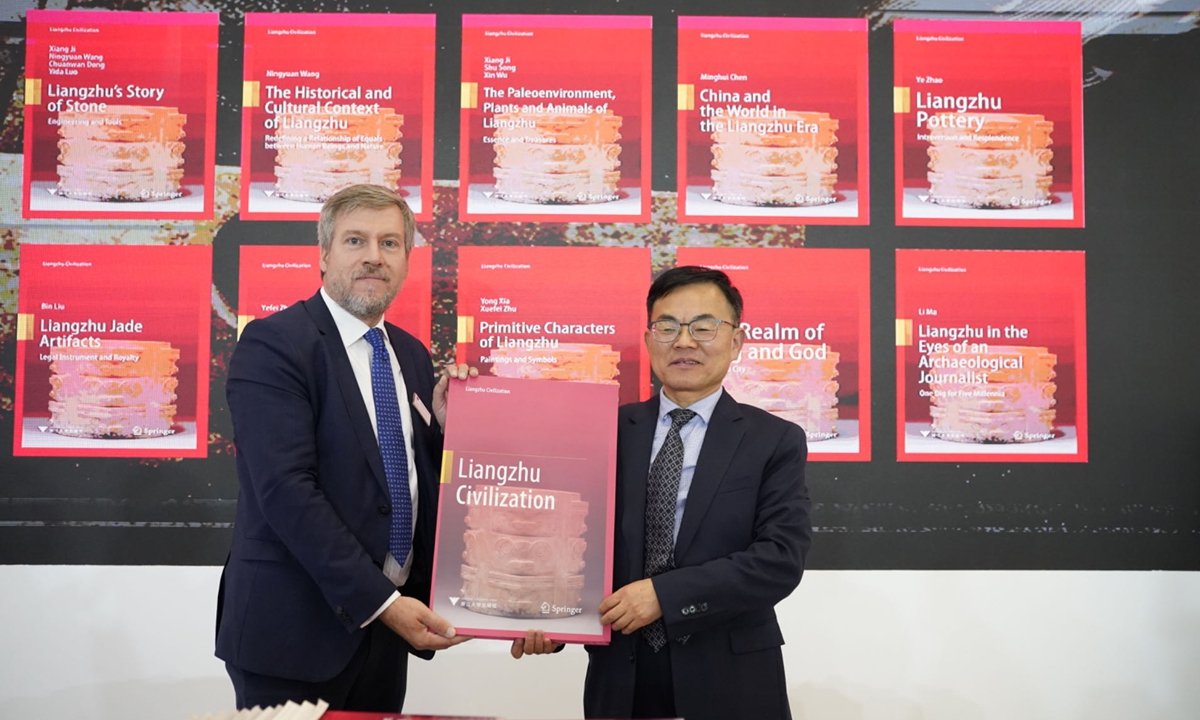The illustrious Frankfurt Book Fair in Germany once again opened its doors, welcoming over 4,200 international exhibitors, the highest since 2020. Among the myriad of literary and artistic displays, the Chinese pavilions stood out with a captivating representation of China’s deep-rooted cultural heritage, groundbreaking technological revelations, and the trending world of web novels.
With more than 1,000 books and publications available, the Chinese booths were a haven for enthusiasts eager to dive into the essence of China’s historical and modern narratives. Complementing the rich display, Chinese publishers organized over ten engaging activities aimed at promoting cultural understanding and fostering mutual exchanges between China and the international community.
Springer Nature’s Managing Director, Niels Peter Thomas, highlighted one such significant collaboration. The English edition of the ‘Liangzhu Civilization’ book series, developed in partnership with Zhejiang University Press, offers readers more than just data. Thomas emphasized its ability to open a portal into the lives and experiences of archaeologists who dedicated themselves to uncovering the ancient secrets of the Liangzhu culture.
The 11-volume English series provides an in-depth look into the 5,000-year-old Liangzhu culture. Through detailed accounts of archaeological discoveries, the series portrays aspects like the ancient city’s ruins, its iconic symbols and paintings, intricate jade artifacts, lifestyle, and the epoch in which this ancient civilization thrived. Chu Chaofu, the President of Zhejiang University Press, asserted the importance of the series, stating it allows a broader audience to appreciate the extensive history of the Liangzhu culture and its place within the tapestry of China’s 5,000-year-old civilization.
Given the significance of the Liangzhu ancient city site, its recognition as a UNESCO World Heritage Site in 2019 was a proud moment for China. In the lead-up to this accolade, a collaboration ensued between archaeologists from the Zhejiang Provincial Institute of Cultural Relics and Archaeology and the Zhejiang University Press to meticulously plan and curate the mentioned series.
But China’s representation at the fair wasn’t limited to historical revelations alone. German versions of books focusing on subjects like the internationalization of the Renminbi, insights into artificial intelligence, and traditional Chinese medicine were also unveiled. Zhu Xiaoting, associated with a German publishing house, acknowledged the significance of these translations, noting the potential they hold in enhancing Germany’s understanding of China’s economic, technological, and medicinal advancements.
Further amplifying China’s voice at the fair, New Star Press launched its ‘Biographies of Silk Road Cities.’ This initiative emphasizes the Belt and Road Initiative’s objectives and underscores the shared future vision of communities across the globe. Moreover, China’s New Century Publishing House marked a significant milestone by forging a strategic partnership with World Book Publishing from the US, with an aim to bring Chinese children’s books to a global audience.
A standout feature at the fair was the showcasing of China’s booming web novel genre by China Literature. Hou Xiaonan, the platform’s president, emphasized the collective creativity involved, with writers from over 100 countries contributing to the platform. This digital form of literature, with a global reach of 910 million readers, emphasizes China’s ability to blend traditional narratives with contemporary digital mediums, highlighting its dynamic presence at global events like the Frankfurt Book Fair.
READ MORE:
